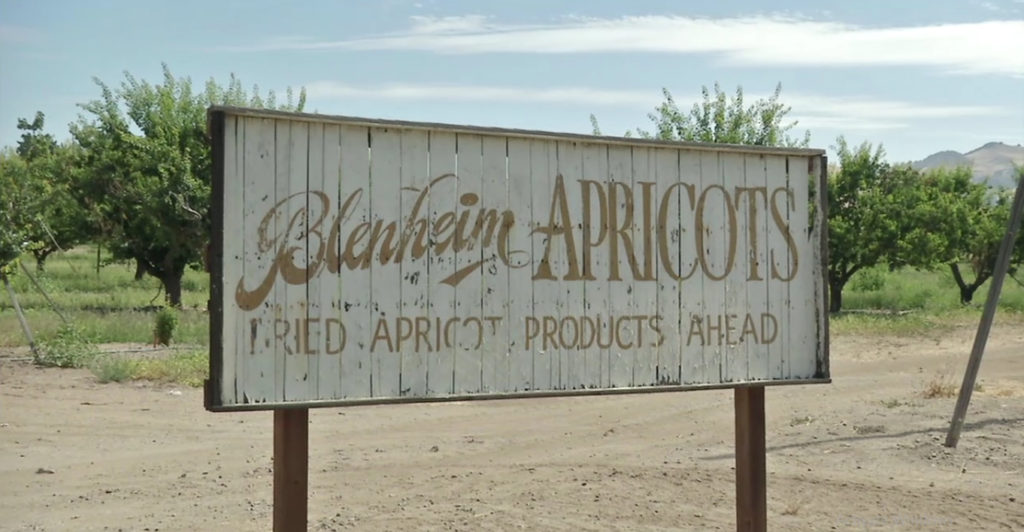
2016 has come to an end, which brings the year-long experience of writing this blog to mind. I have truly enjoyed immersing myself and sharing experiences from a year-in-apricots. There have been lots of adventures, many miles traveled, new friends made, and recipes discovered. And I’ve eaten more than my share of fresh and dried apricots!
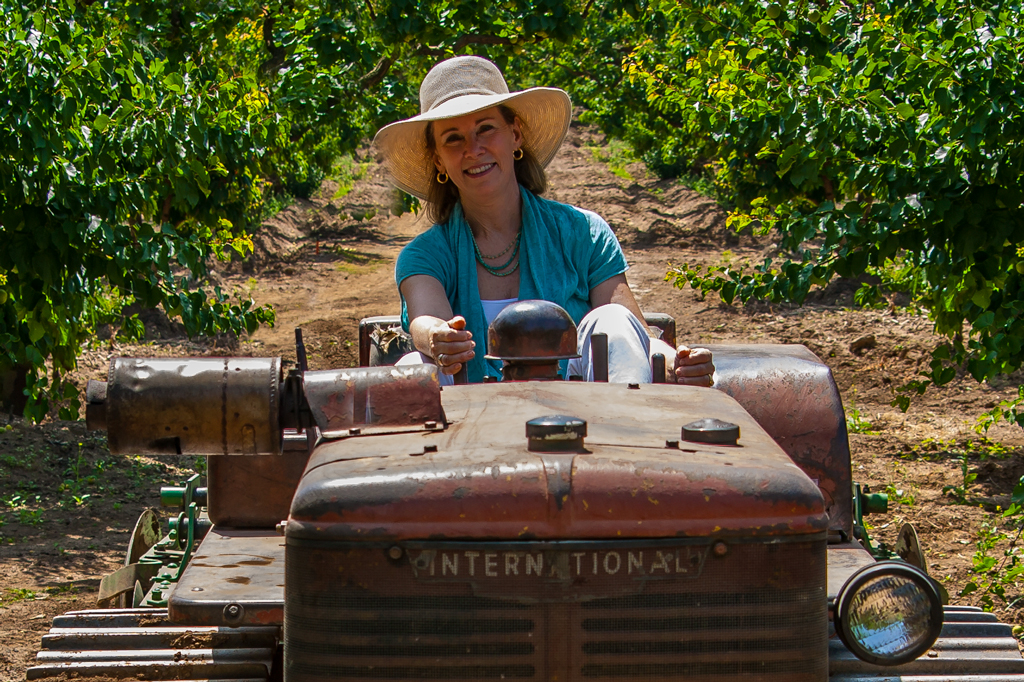
Another great pleasure this year has been reading the eloquent comments and heartfelt apricot memories that subscribers to the blog have shared. Many of them echo my sentiments about the extraordinary beauty of California’s apricot orchards and quality of the fruit. One thing is certain, the “Love of Apricots” is universal!
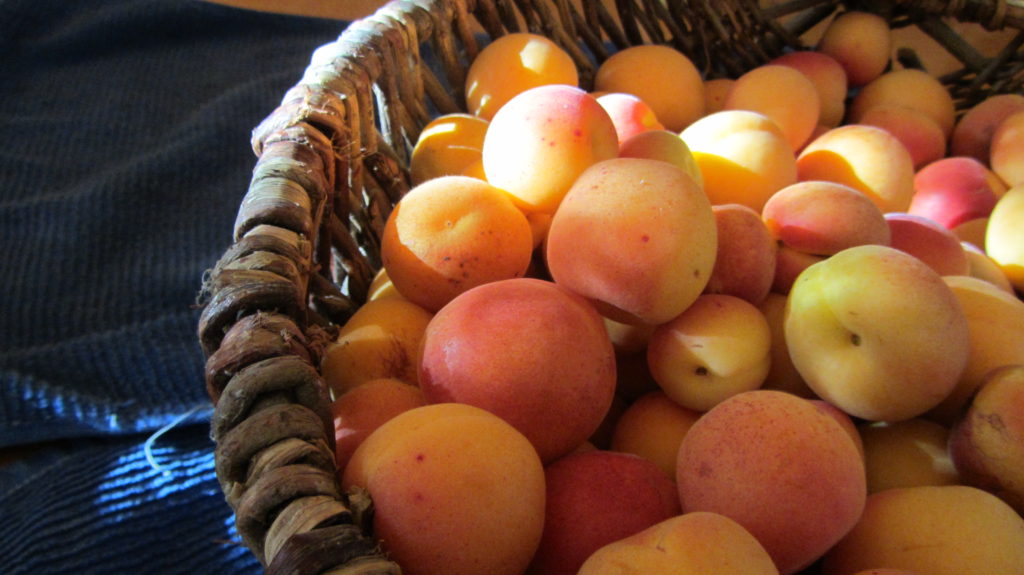
Writing this blog has given me the opportunity to reflect back on my early years growing up surrounded by fruit orchards while reconnecting with many of those that remain today. No question, I feel a deep poignancy facing the reality of Santa Clara County’s transformation from the “Valley of Heart’s Delight” to “Silicon Valley” which has left only a handful of farms remaining close to our Bay Area communities.
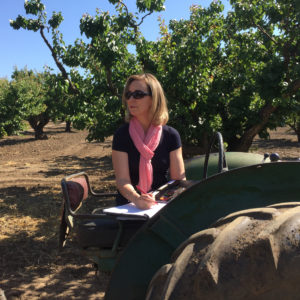
Still, I take heart that the fruit orchard traditions continue through the extraordinary farm families that have persevered for generations, supported by the deep appreciation many local residents have for their delicious fruit. From my perspective as a city planner, I can’t help but imagine there can be change for the better as we redevelop our post-war urban fabric in this new millennium. We have an opportunity at the local level to re-evaluate what makes for a healthy and prosperous region and create a more balanced lifestyle between jobs and housing, farms and communities.
Today most of California’s apricot crop is grown in the Central Valley. However, there is no denying that the Bay Area contains some of the best climate and soil conditions for fruit orchard farming, not just in the State and the nation but in the world. I’m not alone in thinking we need to re-imagine a future where farm-belts are integrated into the tech-belts…and there are signs of that happening (more on that in 2017)!

Last spring, I spent an afternoon talking with Charlie Olson who continues to manage 10 acres of apricot and 3 acres of cherry orchards for the City of Sunnyvale while his daughter, Deborah Olson, oversees the exceptional C.J. Olson Cherries fruit stand. Charlie is a Santa Clara Valley original whose grandparents bought their first prune orchard in Sunnyvale in 1899. Their fortunes grew and prune orchards were followed by apricots and cherry orchards. Now in his eighties, Charlie continues to work a long day, keep the farm equipment humming, and has a tremendous memory for the life and history of the valley pioneers.
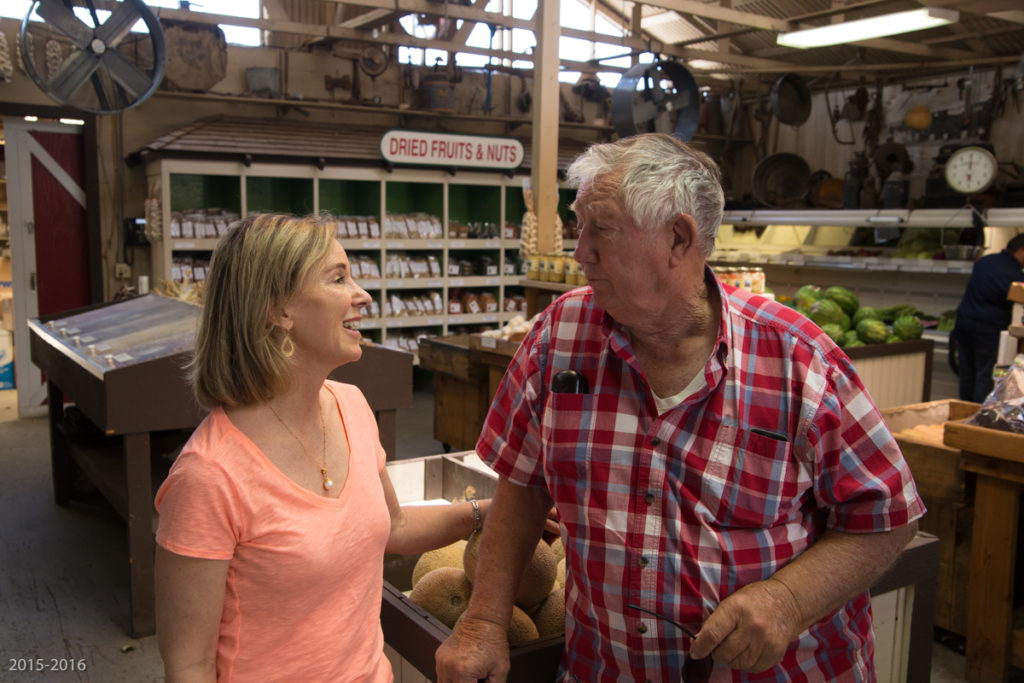
During the 2016 apricot harvest, I traveled to San Benito County to visit other apricot orchard families. While stopping in at the LJB Farms fruit stand, owned by Louie and Judy Bonino, I happened to run into George Bonacich, an apricot “rock star”. I had initially learned about George through Andy Mariani while touring and tasting the myriad varieties of apricots at Andy’s Orchards in Morgan Hill. After the Blenheim, the “Bonny Royal” apricot stood out for me as a favorite for its flavor, texture and beauty. Andy explained that his friend George had invented this variety. Like Andy, George comes from a family of Bay Area farmers. He majored in Pomology at the University of California, Davis and after college, started farming in Cupertino followed by a prune orchard in Healdsburg, then apricot orchards in Patterson and San Benito County. George continues to actively cultivate new apricot varieties. Thanks to Andy and George, I purchased a Bonny Royal tree that I will plant this winter alongside my Blenheim trees to enjoy for years to come.
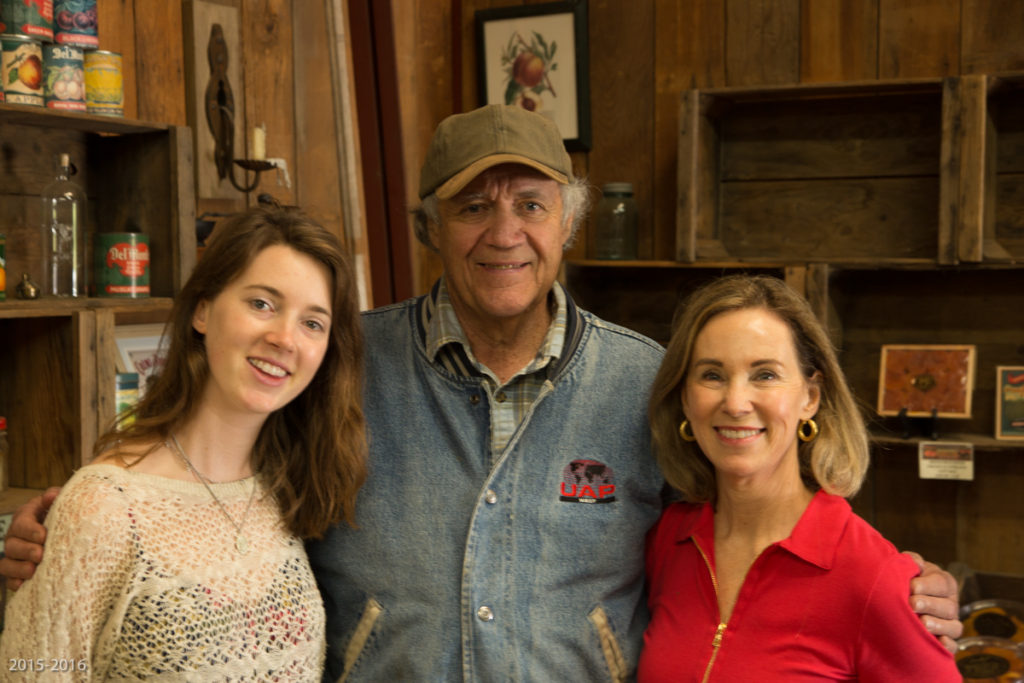
Through these experiences, I’ve learned much more about the orchard work itself and the many challenges growers face: weather (drought and erratic winter temperatures are recent concerns) and how that manifests in the fruit (size, flavor, and quantity of the harvest), maintaining a skilled labor force as land values and housing costs increase, and managing costs; these are just a few aspects farmers deal with in urbanized areas like the Bay Area.
As I have become better acquainted with many of the farm families that remain, I’ve learned about their long family legacies on the land and the pride they have in their work and farm products. My respect for their stewardship of the land and appreciation for what they bring to our quality of life has deepened.
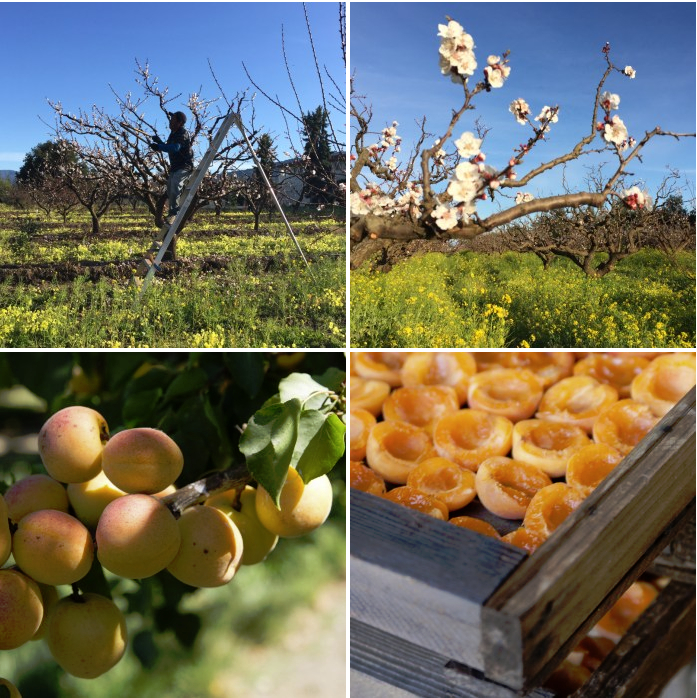
From winter dormancy and pruning, to the budding blossoms of spring amid riotous mustard, to the frenzied summer harvest of the ripened fruit when most of the crop is dried, this “Year-in-Apricots” has been beautiful in every season.
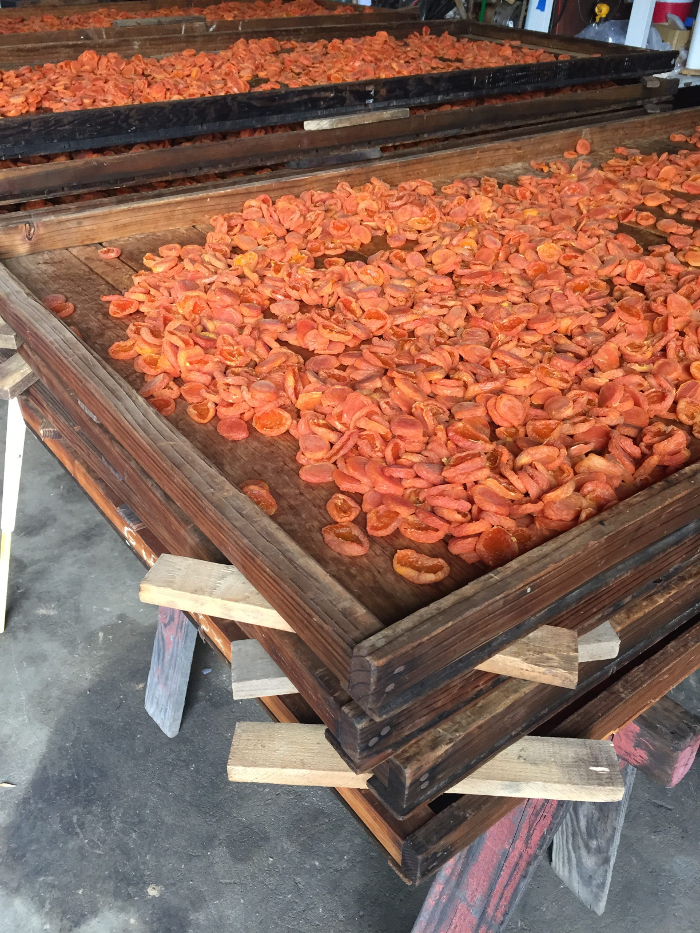
As fall colors deepened with winter’s approach, it was time to savor the apricot harvest. 2016 brought a fairly light yield and during a November visit to Novakovich Orchards, we talked about how long the supply of dried apricots would last beyond the Holiday season when most sales of their specialty products like chocolate apricots, apricot turtles, and dried fruit gift packages occur. I made sure to do my Christmas gift shopping early for friends and family who have grown to love (and expect) these apricot delights.
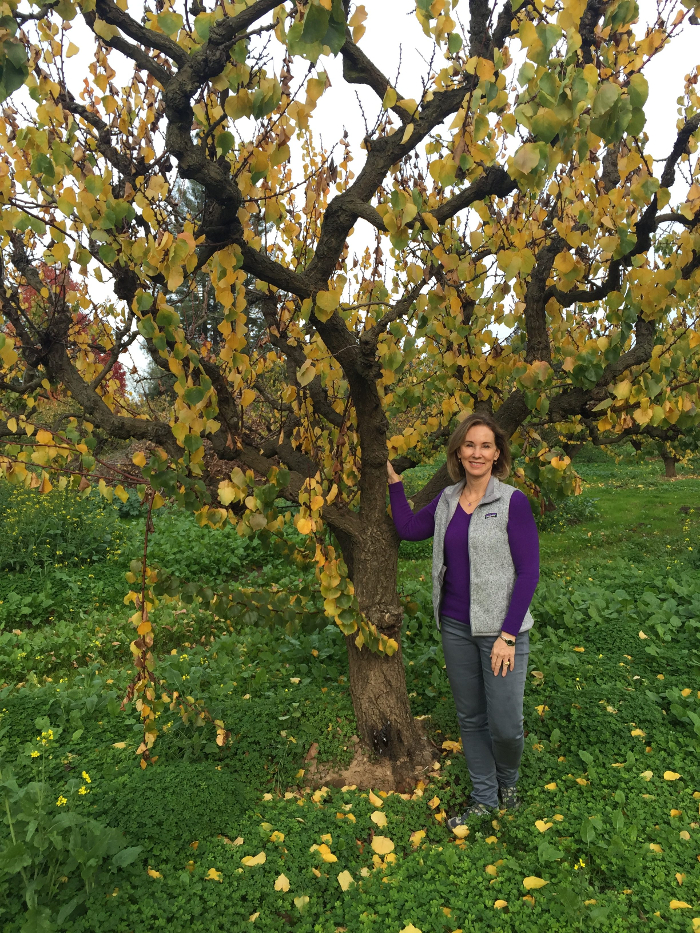
The year ended with a family reunion in Paris where my son and daughter-in-law are living. Spending a few weeks “living like a local” during the holiday season — shopping for our Christmas feast at their extraordinary neighborhood farmers market, admiring the exquisite pastries in their local pâtisseries (and indulging in many, of course), dining in their favorite bistros — was a great joy!

Strolling through the colorful Christmas Markets in Strasbourg and Paris, warmed by a glass of hot spiced wine, I discovered wonderful Alsatian cookies, Christmas teas and something new: Pain d’épices – a traditional French spice bread that has a heavenly scent and a light, delicious flavor. The French enjoy this versatile cake/bread toasted with butter and jam, frosted and decorated like gingerbread and also as an accompaniment for Foie Gras.

[recipe print=”true”]
PAIN D’ÉPICES
Pain d’Épices dates back to the 15th century, when honey and spices brightened the winter fare. Returning from our family holiday in Paris, I was excited to bake this traditional French quick bread, adapted from Flo Braker’s recipe with a few embellishments including the addition of apricot jam, dried apricots and almonds. At a belated New Year’s party, I served my guests thin slices of Pain d’épices topped with Foie Gras along with assorted French cheeses, Alsatian cookies and Champagne. The next morning, we enjoyed it toasted for breakfast with apricot jam. Délicieux!
| Yield: Makes 1 loaf | Prep Time: 30 minutes | Cook Time: 60 minutes |
|
Ingredients:
|
Directions:
Pain d’épices keeps well for a week wrapped in plastic and can also be frozen for a few months. |
[/recipe]

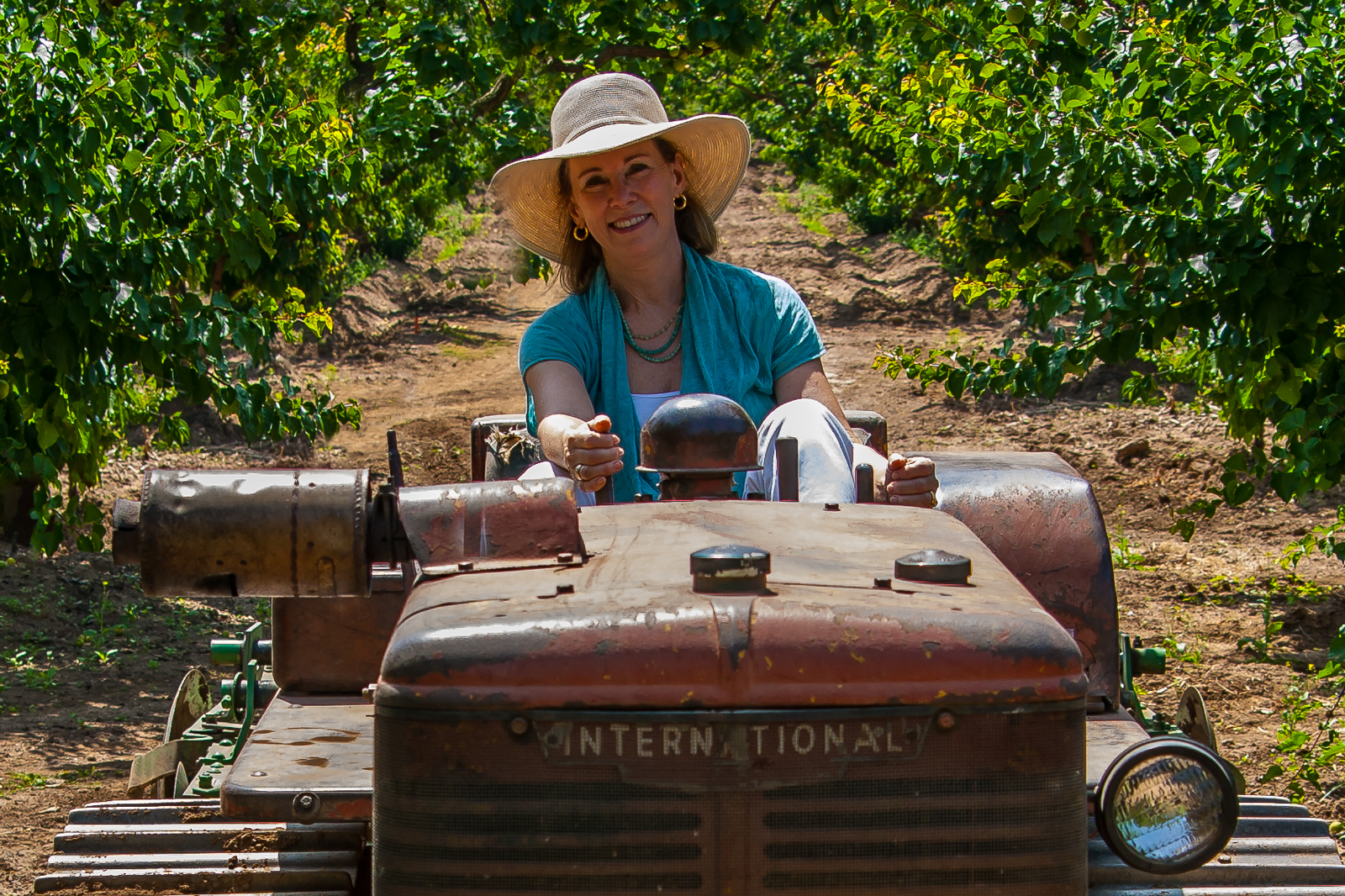
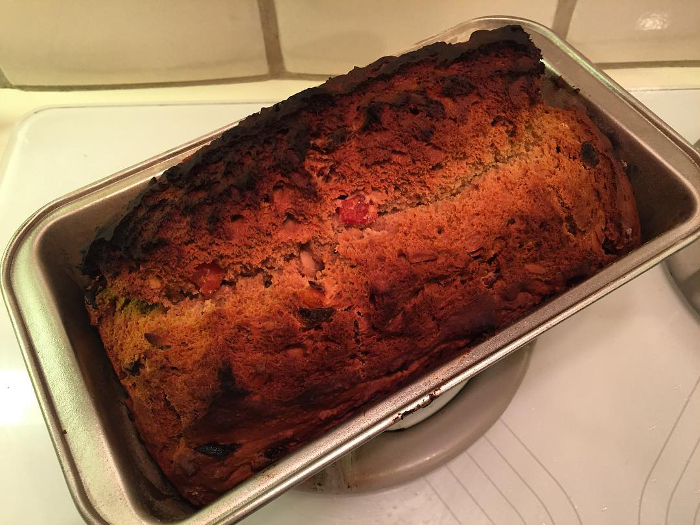


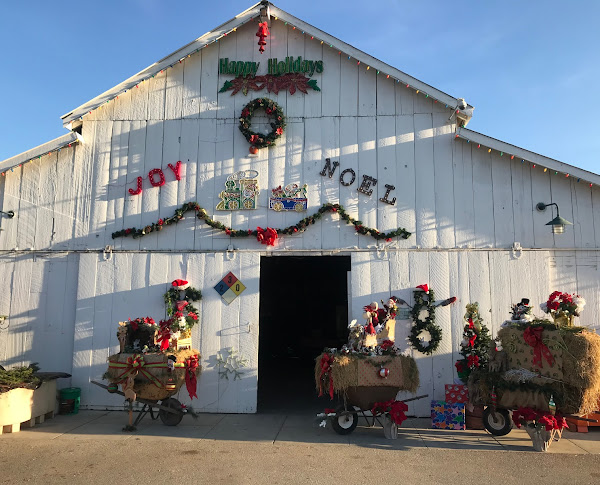
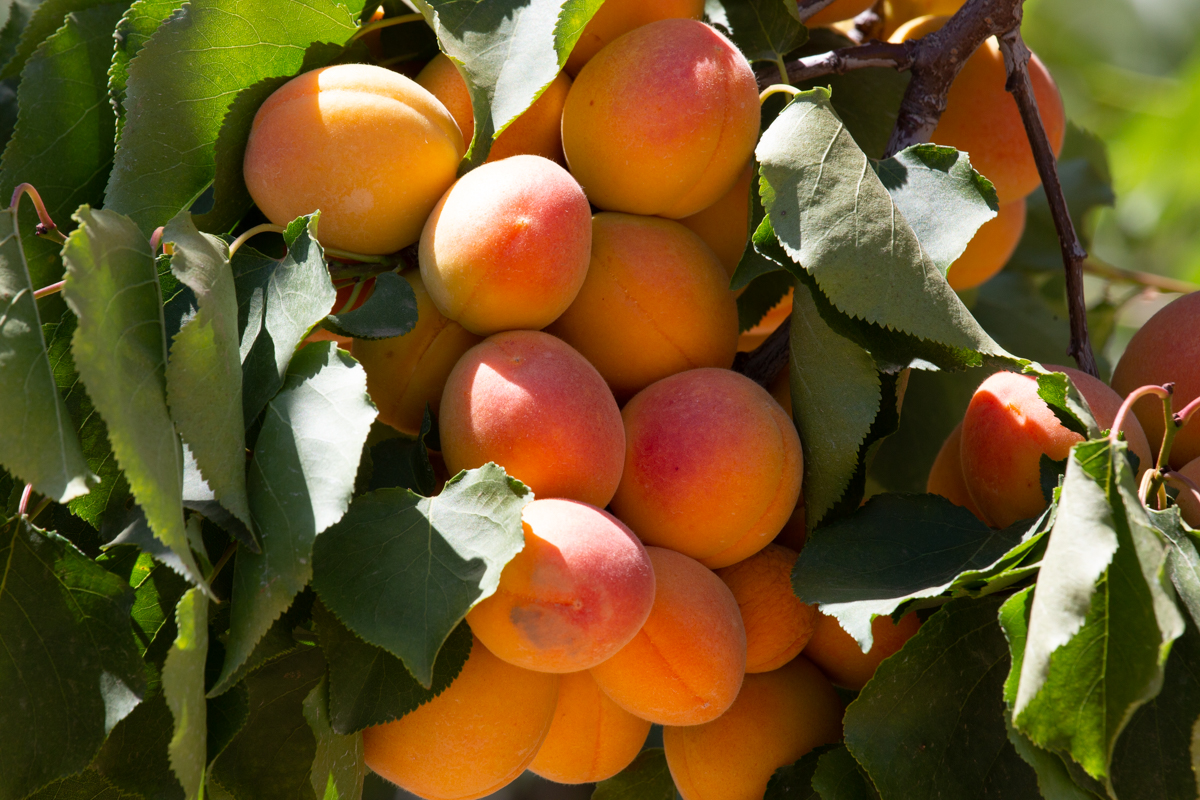
donconley32@gmail.com grew up in san jose farmed many acres before housing took over. Have orchards in san martin and patterson You can add me to your blog thanks
Glad to hear from you, Don! Your path tells the story of apricots in the Santa Clara Valley. I’m interested to know what varieties of apricots you grow and at which ranch? I plan to attend the Patterson Apricot festival this year.
Lisa, I love your blog with all the wonderful photos and information about apricots – the health benefits of apricots are amazing, the kernels are the best source of Vitamin B17 an anti-cancer vitamin. I love to see all your recipes as well as all the information you give us. Like everyone else I look forward to your book being published. Unfortunately, I am not able to sample Californian apricots as they haven’t hit the supermarkets in the UK!
Thank you Jane for your nice comments and encouragement on the cookbook! I will look into sending some CA apricots across the pond.
Lisa, thoroughly enjoying your blog. I’m waiting for the apricot book also!
Thank you Mary Lou!
Lisa, I discovered your blog while researching a blog piece of my own on my family’s arrival in Silicon Valley in the 1960s and my memories of orchards being bulldozed for tract houses. I love what you’re doing with the apricot theme, and look forward to the cookbook.
Thank you so much Maureen. It sounds like we have common ground but I don’t think of it as the Silicon Valley back then.
Dear Lisa,
I just discovered your article through a neighborhood post — I want to thank you for reminding me the way things were when I was growing up — when it was the Valley of Heart’s Delight, agricultural, fragrant with blossoms — yes real blossoms — looking over the valley from the country 2-lane road: Blossom Hill Road in the spring it was a sea of white, as I recall, and the perfume of the blossoms was wonderful. My first summer job at 15-1/5 years old was cutting apricots. The Santa Clara Valley, I am told, is the second most fertile alluvial plain in the world where the fertile ground goes down 20-40 ft. Paving it over is seems like a crime. My father said it takes 100 years for soil to regain its health as agricultural land once it has been paved over, smashed down by tons of building and parking lot, and denied rain’s nourishment…. Just a stroll down memory lane. Guess at heart I am a farmer not a siliconer. I’ve grown up on 2 acres by Wildcat Creek and love what I can harvest after the squirrels, rabbits, gophers, deer, rats, moles and voles have finished with my orchard.
Thanks for your blog.
Tracy Susman
Lisa, in your latest blog you demonstrate you have the touch for doing it right. You have put together a beautiful balance of a story line, photos, interesting people, and a recipe. Congratulations.
I grew up on a street originally called Panama Avenue. There were mostly 20 acre orchards of mostly Blenheim variety apricots. My folks, Frank and Josie Rodrigues, had 15 acres of Blenheim apricots and 5 acres of cherries, Bing and Royal Anne’s. They ranched until 1961 when some of the ranchers started selling their acreage! The ranchers depended on each other for well water and tractoring. It became too difficult to ranch when homes come into place next to existing orchards. They made their living with the orchards. DiBello, Ponce, Blanco, Wedlake, Sanchez, Ralph Rodrigues, Ravizza, and Frank Rodrigues were apricot growers on Panama Avenue! It was a great way to grow up!!
Thought about your blog and our area’s heritage yesterday as we drove up Saratoga-Sunnyvale Rd. past Olson Orchards and saw the giant “Libby’s Fruit Cocktail” -decorated water tower again. Enjoyed reading this latest post! A friend gave us a box of Novakovitch dried apricot turtles for Christmas and they’re delicious! Each summer the Packard family orchards donate apricots to the Stanford Parents’ Club for making delicious jam sold to raise money for college scholarships. Our oldest daughter remembers walking by, and occasionally tasting fruit from, a remnant apricot orchard on her way to school (it was on Scully Dr. in Saratoga at Kevin Moran Park–sadly, the trees are gone now). We talked about that recently and she bought me a jar of delicious SQIRL Blenheim Apricot jam in Los Angeles. The label says the fruit was dry-farmed by Forcefield, Rancho del Sol.
What a year! Your blog just gets better and better Lisa. Here’s to to trying some of your recipes in 2017. They all look delicious.
Such a beautiful, fun, and delicious journey! So happy to have been a part of the ride when I could. We’ve all learned so much from your posts and adventures! Xx M
Right on! You’ve done such a great job of keeping a steady flow of interesting updates on this apricot-inspired adventure. I’ve especially loved your insight into the old farming tools and traditions, the weathered folks who keep the spirit alive, and how the culture surrounding this fruit is staying active abroad. Where else might your love of apricots take you next?
A quick search led me to an apricot farm for sale in Argentina, a ‘Pick Your Own’ apricot orchard in Melbourne, Australia, and a brief history of tropical apricots grown in Hawaii since the 1920’s, to help prevent cattle from wandering into the cane fields.
It seems like there is no limit to your work in this space, and I say aim high!
When can we expect an apricot book publication out of your camp?
<3
Lisa, I have enjoyed your latest addition to the blog. Thanks for including me in your post. Tim